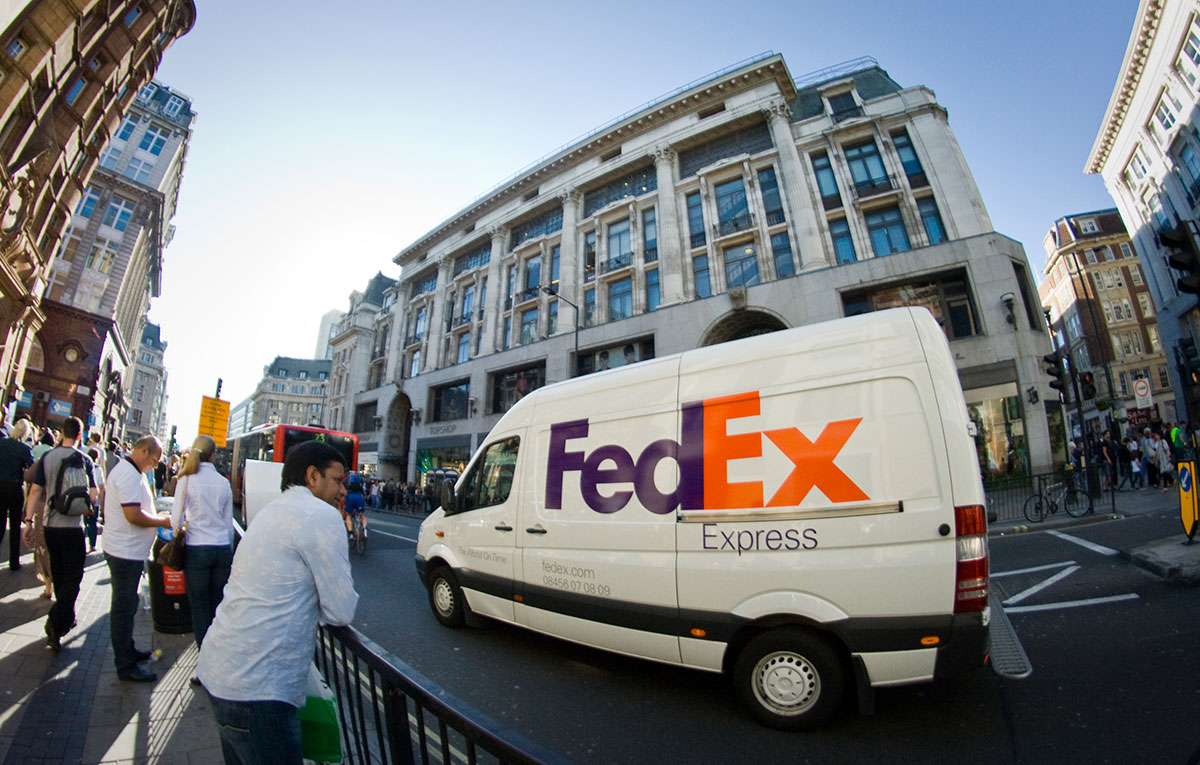
Back in 1998, in the heyday of the dot-com bubble, Pets.com launched. The site was perhaps best known for its ad campaign which featured a sock puppet dog. The company’s business plan was to deliver pet supplies to people’s homes. The site was a horrendous failure, and its bankruptcy served as a sort of warning sign to would-be e-commerce entrepreneurs for years to come.
Yet if we fast-forward to today, home delivery of everyday items seems, well, everyday. Pets.com may have had a flawed business model, but the basic principle behind it was sound. Amazon weathered the dot-com bust, as did a handful of other e-commerce sites. Many brick-and-mortar retailers have successful websites. Even trips to the grocery store are being replaced with deliveries from companies like Peapod, FreshDirect, and even Amazon.¹ But with the boom in online shopping for everything from jeans to Jujyfruits, people have grown concerned that e-commerce’s simplicity comes with an environmental price.
The concern mostly centers around the delivery’s carbon footprint. All those UPS trucks rumbling down every street in American surely can’t be a good thing. They’re big, their loud engines must suck tremendous amounts of fuel, and what happens if you’re not home to pick it up? Fret not. Your Amazon delivery probably has a trimmer footprint than a simple trip to the store.
A number of studies have looked at the difference in carbon emissions between items ordered over the internet and those purchased the old fashioned way.² One straightforward study collected data from a clothing retailer in Germany that sold their wares both in stores and online. Researchers surveyed over 700 in-store shoppers at two locations and 40,000 online orders. They then stratified their results based on travel distances to the store and distances from the warehouse to customers’ homes. At short distances—less than 8.6 miles or 14 km one-way—in-store shoppers slightly edged out online customers per transaction, about 73.8 g CO2 vs 77.9 g CO2. But over that, online shoppers’ footprints remained relatively stable while store goers emissions skyrocketed to as high as 451.4 g CO2 per transaction if they had to travel over 62 miles or 100 km.
Another more comprehensive study from the U.K. looked at the “last mile,” or the last journey of an item to a customer’s home. Researchers focused on non-food items, such as books, CDs, clothing, cameras and other household items. They also took into account how a person traveled to the store—car, bus, walking, or other public transportation—the frequency with which items are returned, and how requiring signatures for packages affects the rate of successful deliveries.³ If you want to reduce your carbon footprint, their results were unequivocal: Shop online. If you drove to the store, you’d have to buy 24 items to make the trip equal to the carbon footprint of just one item ordered online. If you took the bus, you’d have to buy eight.
Why are brick-and-mortar stores so inefficient? It turns out that transporting people to the store to select something and then getting them back home again requires a lot of energy. You also have to consider that items sold in stores were distributed from a central warehouse. When you place an order online, that trip transforms from one to the store to one directly to your home. Plus, delivery services optimize their routes to waste the least amount of fuel.⁴ Everyday shoppers don’t think in that level of detail. Even if you combine trips, which many of us are terrible at doing, you’d have to buy a lot of stuff per trip to equal the efficiency of a delivery.
Sources:
Edwards J.B., McKinnon A.C. & Cullinane S.L. (2010). Comparative analysis of the carbon footprints of conventional and online retailing: A “last mile” perspective, International Journal of Physical Distribution & Logistics Management, 40 (1/2) 103-123. DOI: 10.1108/09600031011018055
Wiese A., Toporowski W. & Zielke S. (2012). Transport-related CO2 effects of online and brick-and-mortar shopping: A comparison and sensitivity analysis of clothing retailing, Transportation Research Part D: Transport and Environment, 17 (6) 473-477. DOI: 10.1016/j.trd.2012.05.007
Photo by lordferguson.
Related posts:
If the world’s population lived like…
Drive a lot? Housing density may not be to blame
Tell me how much you drive, and I’ll tell you where you live
